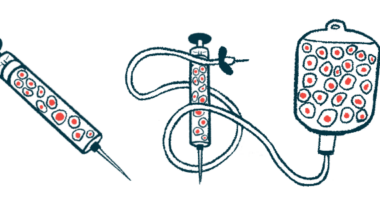Buspirone, for Anxiety, Helps to Prevent Disease in Mouse Model

Mice in a Parkinson’s disease model treated at higher doses with the anti-anxiety medication buspirone had lesser evidence of nerve cell degeneration in the brain and more normalized behaviors than untreated mice, a pair of researchers in Australia reported.
“To our knowledge, this is the first study to investigate the ability of buspirone to prevent inflammation and promote neuroprotection in a model of PD [Parkinson’s disease]” they wrote. A trial of this treatment in patients, the researchers also noted, had mixed at best results.
The study, “The anxiolytic Drug Buspirone Prevents Rotenone-Induced Toxicity in a Mouse Model of Parkinson’s Disease,” was published in the International Journal of Molecular Sciences.
Parkinson’s is caused by the death and dysfunction of dopaminergic nerve cells (dopamine-producing neurons) in the brain. Although the drivers of this cell death remain incompletely understood, neuroinflammation — inflammation in the brain — is believed to play a key role in disease progression.
Buspirone, sold under brand names such as BuSpar and Vanspar, is an oral therapy for anxiety. Buspirone is thought to work mainly by modulating serotonin — a neurotransmitter, or chemical messenger — signaling in the brain. Studies done in the last decade have shown that the medication also blocks the activity of a specific dopamine receptor protein called D3R.
Notably, the D3R protein is known to be involved in the activation of microglia. These resident immune cells of the brain help to protect it from infections but also play central roles in disease-driving neuroinflammation.
“It is well accepted that blocking microglial-induced inflammation reduces neurodegeneration and slows disease progression,” the researchers, both with the Laboratory of Cellular and Molecular Neuroscience at the University of Technology Sydney, wrote.
The known importance of microglia in neuroinflammation, combined with recent evidence that buspirone can block the D3R protein needed for their activation, “prompted us to investigate if buspirone can protect from dopaminergic degeneration by attenuating neuroinflammation in” a mouse model of Parkinson’s, the researchers wrote.
Researchers specifically used a mouse model where Parkinson’s-like symptoms and brain damage were induced through a chemical insecticide called rotenone. Some mice were injected with buspirone at doses ranging from 1 to 10 mg/kg, while others were untreated to serve as a control group.
Rotenone-induced Parkinson’s mice showed abnormal behaviors, especially a lesser tendency to explore during open-field tests. They also tended to move shorter total distances, reflecting motor deficits.
But mice treated with buspirone, particularly at the higher doses tested, showed none of these abnormalities.
“When the drug [buspirone] was co-administered with rotenone at the highest dosages (3 and 10 mg/kg), it successfully prevented the behavioural impairments caused by the insecticide,” the researchers wrote.
Analyses of brain tissue also found buspirone at high dose (10 mg/kg) prevented the loss of dopaminergic neurons in several regions of the mice’s brains.
“We report that buspirone prevented rotenone-induced deficits in locomotor and exploratory behaviour, and dose-dependently rescued dopaminergic degeneration in the substantia nigra pars compacta, midbrain, and striatum,” the team wrote.
Further analyses showed that treatment with buspirone reduced levels of pro-inflammatory signaling molecules (cytokines) in the mice’s brains, such as IL-1 beta and IL-6. Its use also increased levels of several signaling molecules that promote the survival of brain cells, like BDNF and ADNP.
These results suggest “that buspirone is able to afford some of its beneficial effects by modulating the immune response and by promoting the release of protective factors,” the researchers wrote.
Noting that a clinical trial (NCT02803749) into buspirone’s use in 21 Parkinson’s patients, with results published in 2020, reported both tolerability concerns and “a signal of efficacy,” the team stressed a need for further work into “the exact role exerted” by agents like buspirone in the brain and suggested further refinement of their “receptor selectivity.”







